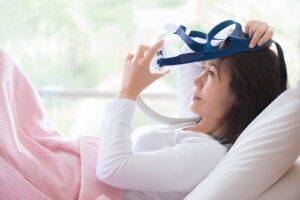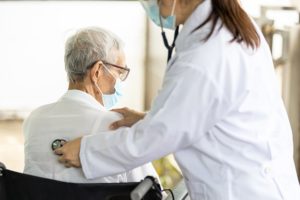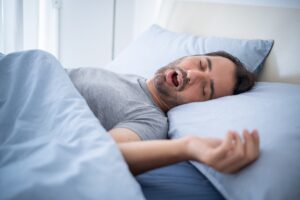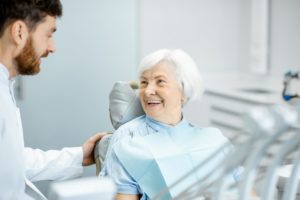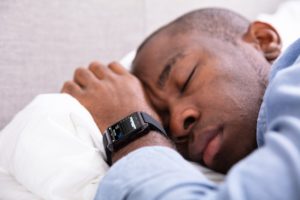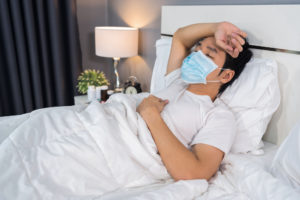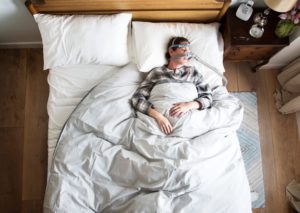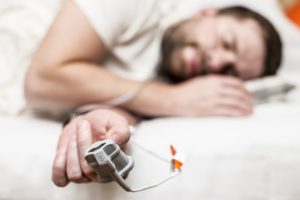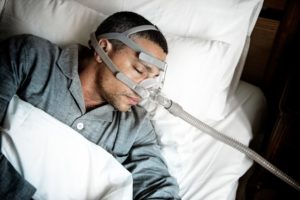When you buy through our links, we may earn a commission. Products or services may be offered by an affiliated entity. Learn more.
Surgery for Sleep Apnea
- What Is Surgery for Sleep Apnea?
- Mouth, Throat, and Windpipe Surgeries
- Jaw Surgery
- Tongue Surgeries
- Nasal Surgeries
- Nerve Stimulation Surgeries
- Weight Loss Surgeries
- How Does Sleep Apnea Surgery Compare to Other Treatments?
- Who Is Sleep Apnea Surgery Best For?
- Talking to Your Doctor About Surgical Options for Sleep Apnea
Sleep apnea is a disorder that involves lapses in breathing during sleep. People with sleep apnea face a variety of symptoms including snoring, morning headaches, tiredness during the day, irritability, and trouble focusing. Sleep apnea also puts people at a greater risk for multiple health issues, such as stroke, heart attack, and high blood pressure.
For these reasons, diagnosing and treating sleep apnea is extremely important. Usually, sleep specialists first prescribe non-invasive treatments for sleep apnea, like continuous positive airway pressure (CPAP) therapy or oral devices. When non-invasive treatments are not successful, sleep specialists might recommend surgery. The best surgery for a person with sleep apnea largely depends on the type of sleep apnea they have and their own unique anatomy.
What Is Surgery for Sleep Apnea?
There are many surgeries given to people with obstructive sleep apnea (OSA) and one for people with central sleep apnea (CSA).
With OSA, a person stops breathing during sleep because their airway becomes partially or completely blocked. Surgeries for OSA primarily involve reducing physical blockages, for example by removing tissue or adjusting placement of the jaw or tongue. The ideal surgery for a given individual with OSA depends on their anatomy and what is causing their airway blockage. Sometimes weight loss surgeries are also recommended, since OSA and obesity are linked.
With CSA, a person stops breathing during sleep due to a problem with signals sent from the brain stem. Because CSA-related lapses in breathing are not caused by physical blockages, surgeries for OSA would not work as a CSA treatment. However, there is one surgical procedure available for people with CSA that involves electrically stimulating a nerve that leads past the lungs to the diaphragm.
Before recommending a type of sleep apnea surgery, a medical professional generally conducts a pre-surgical evaluation. This evaluation often involves a nasopharyngoscopy, or a short procedure in which a flexible scope is inserted into the nose and throat, allowing the doctor to look for areas that might cause blockages while sleeping.
Sometimes pre-surgical evaluations involve a sleep endoscopy, in which a scope is inserted into the nose and throat while a person sleeps. In certain cases, a doctor may also order scans, such as a computed tomographic (CT) scan, a magnetic resonance imaging (MRI) scan, or an x-ray to look for blockages.
The medical team will choose the best surgery depending on what they find, and may perform more than one surgery on different areas.
Mouth, Throat, and Windpipe Surgeries
Multiple surgeries used to treat sleep apnea involve operating on parts of the mouth and throat, also called the pharynx. One surgery involves the windpipe, or trachea.
Uvulopalatopharyngoplasty (UPPP) or Upper Airway Surgery
UPPP is the most commonly performed surgery for OSA and has been used since the early 1980s . This surgery involves removing or shrinking parts of tonsils, the uvula, and the soft palate. The uvula is the structure that dangles in the back of the throat between the tonsils, and the soft palate is the part of the roof of the mouth that connects to the throat. The soft palate contributes to airway blockages in more than 90% of people with OSA .
UPPP surgery can be conducted in a traditional manner or by using minimally invasive radiofrequency. Studies of radiofrequency UPPP together with complete tonsil removal have shown 60% to 70% success rates. Laser-assisted UPPP (LAUP) is also available, but research suggests this technique could be potentially harmful, so experts currently recommend against it.
Tonsillectomy
Although less common than UPPP, tonsil removal surgery or tonsillectomy can be a useful treatment for adults who have mild to moderate OSA and enlarged tonsils. In one study, a tonsillectomy significantly reduced symptoms in over 85% of adults with OSA who received the surgery and cured over 57% of participants.
Tonsillectomy is a standard treatment for children with OSA. Sometimes, a tonsillectomy and adenoidectomy are conducted at the same time in children with OSA. An adenoidectomy refers to removal of the adenoids, two lumps of tissue that sit above the roof of the mouth behind the nose. Removing tonsils, adenoids, or both can help keep the airway from closing during sleep. If OSA symptoms persist after surgery, removing a child’s lingual tonsils, a second set of tonsils that sit behind the tongue, has been shown to improve symptoms.
Tracheotomy
Also called a tracheostomy, this surgery involves bypassing the part of the airway that becomes blocked entirely and connecting a tube directly to a person’s windpipe through a hole in the neck. A person who has had a tracheotomy then breathes through the tube, which requires daily maintenance, rather than through their nose or mouth. Because this surgery is more invasive and life-altering than most, experts recommend it only when a person’s life is at risk.
Jaw Surgery
One type of jaw surgery is commonly performed as a treatment for OSA.
Maxillomandibular Advancement
In maxillomandibular advancement surgery, the upper airway is made larger by surgically moving a person’s jaw forward. This change opens up space in the throat, near the tongue and soft palate, and where the throat connects to the nasal passage. Sometimes this surgery is also called bimaxillary advancement surgery, because both the upper and lower jaw bones are moved forward.
An analysis of 45 studies of maxillomandibular advancement surgery found that the procedure was considered a success in nearly 86% of people and cured OSA altogether in 39% of those who received it. The surgery also led to at least mild improvements in nearly 99% of people who had it. Another analysis found that this surgery succeeds at increasing the volume of air that can pass through the upper airway, as well as improves blood oxygen levels and reduces sleepiness.
Maxillomandibular advancement is an invasive surgery, and it comes with more risks. Some people experience negative aftereffects, and the procedure can change a person’s appearance since it alters their bone structure.
Tongue Surgeries
When the base of a person’s tongue contributes to OSA airway blockages, doctors might consider one of three tongue surgeries as potential treatments.
Genioglossus Advancement
The genioglossus muscle (GGM) is the muscle that protrudes the tongue forward and it can cause the tongue to block the airway, depending on a person’s anatomy. Genioglossus advancement, also called tongue base advancement, involves surgically moving this muscle forward so it is less likely to interfere with nighttime breathing. The success rate of this surgery ranges from 39% to 78%.
Midline Glossectomy
A midline glossectomy, or tongue base reduction, involves removing tissue from the base of the tongue to help open the airway. There are a few surgical methods available for reducing the size of the tongue base. Surgeons may remove tongue tissue using a laser, a tool called a plasma wand, and even with the assistance of a robot. They may also use radiofrequency to remove tissue and firm up the remaining tongue base.
Midline glossectomy improves OSA symptom outcomes when combined with other surgeries, like UPPP, but is not generally recommended on its own. In children who receive lingual tonsillectomies for OSA, tongue base reduction may be done during the same procedure.
Hyoid Suspension
The hyoid bone sits toward the top of the neck and connects to the tongue muscles. Hyoid suspension surgery involves moving this bone, which then moves the tongue and helps open the airway. One older study found this surgery to be less useful than either genioglossus advancement or tongue radiofrequency, successfully treating only 17% of those who received it. More recently, researchers have suggested hyoid suspension surgery could be useful when paired with other OSA surgeries , such as tonsillectomy.


Nasal Surgeries
Since people commonly breathe through their noses during sleep, nasal surgeries can also help remove blockages associated with OSA. Nasal surgery for OSA is sometimes contested, since research studies of nasal surgeries have produced mixed results. Although nasal surgeries improve sleep quality and reduce snoring, they don’t always reduce the number of lapses in breathing during sleep. However, nasal surgery can make CPAP use more comfortable, thereby increasing how often a person uses their machine.
The type of nasal surgery performed depends on the type of blockage present. A person may experience nasal blockages as the result of a deviated septum, nasal polyps, enlargement of the bony structures called turbinates, or chronic nasal congestion, called chronic rhinitis. The following surgeries may be performed to treat these blockages:
- Rhinoplasty, a surgery that alters the shape of the nose
- Septoplasty, a procedure that straightens the septum, which is the bone and cartilage dividing the nostrils
- Endoscopic Sinus Surgery, a surgery to remove tissue inhibiting sinus drainage, often given to people with allergies or frequent sinus infections
- Nasal Valve Surgery to keep the nasal passage open at its narrowest point
- Turbinate Surgery to shrink or remove bony structures in the nose called turbinates
Nerve Stimulation Surgeries
There are two nerve stimulation surgeries used to treat people with sleep apnea. Hypoglossal nerve stimulation, or upper airway stimulation, is primarily for those with OSA, and transvenous phrenic nerve stimulation is primarily for those with CSA.
Hypoglossal Nerve Stimulation (HNS) or Upper Airway Stimulation
Hypoglossal nerve stimulation (HNS) involves surgically implanting a device that feeds an electrical current to the tongue, causing it to stiffen or move forward and help clear the airway. This procedure can be conducted as outpatient surgery, and the voltage released by the device can be adjusted to the amount required to reduce symptoms in a given individual.
Some studies have shown HNS treatment is successful in more than 80% of cases , and many who receive it prefer it to CPAP therapy. There are several types of HNS implants available, and research suggests different types carry different success rates .
Transvenous Phrenic Nerve Stimulation (PNS)
An implant that electrically stimulates the phrenic nerve is available as a treatment for moderate to severe CSA. The phrenic nerve connects to the diaphragm, so phrenic nerve stimulation (PNS) helps regulate breathing. This implant is customized to each individual to ensure the right amount of stimulation. Studies show that people with CSA who receive PNS experience fewer lapses in breathing each night, along with less daytime tiredness and improved mental health.
Weight Loss Surgeries
Although weight loss surgeries are not direct treatments for sleep apnea, medical professionals sometimes recommend them to help manage OSA. In particular, weight loss surgeries are considered when a person has a body mass index (BMI) over 40, cannot lose weight on their own, and have tried other treatments that have not been successful. Weight loss, or bariatric surgeries, suggested for people with OSA may include gastric bypass and gastric band surgery. Studies show that weight loss effectively reduces the severity of OSA, but may not cure it completely.
How Does Sleep Apnea Surgery Compare to Other Treatments?
Comparing sleep apnea surgeries to other treatments is difficult. The gold standard treatment for sleep apnea is CPAP therapy. In general, healthcare professionals often prefer to try non-invasive therapies first, because of the potential risks attached to surgery.
Choosing the right surgery requires a clear understanding of what is causing symptoms, and especially in the case of OSA, this can vary from person to person. Moreover, surgical treatments may become less effective over time if people age or gain weight, which could cause sleep apnea symptoms to reappear.
Who Is Sleep Apnea Surgery Best For?
Although CPAP therapy is the most effective treatment available when looking at groups of people, surgery may be a better option for individuals who have certain anatomical traits or those who cannot tolerate non-invasive therapies like CPAP.
Talking to Your Doctor About Surgical Options for Sleep Apnea
Talk to your doctor or sleep specialist if you have been diagnosed with sleep apnea and have trouble adhering to the non-invasive treatments you’ve been prescribed. They can ask questions and perform evaluations to determine if you are a good candidate for sleep apnea surgery.
Before agreeing to go ahead with surgery, make sure you understand the risks involved. Don’t be afraid to ask your doctor questions like what type of surgery they recommend, how it will be performed, what is the success rate, and how long it will take before you can resume your usual activities.
Medical Disclaimer: The content on this page should not be taken as medical advice or used as a recommendation for any specific treatment or medication. Always consult your doctor before taking a new medication or changing your current treatment.

Still have questions? Ask our community!
Join our Sleep Care Community — a trusted hub of sleep health professionals, product specialists, and people just like you. Whether you need expert sleep advice for your insomnia or you’re searching for the perfect mattress, we’ve got you covered. Get personalized guidance from the experts who know sleep best.
References
8 Sources
-
Sheen, D., & Abdulateef, S. (2021). Uvulopalatopharyngoplasty. Oral and Maxillofacial Surgery Clinics of North America, 33(2), 295–303.
https://pubmed.ncbi.nlm.nih.gov/33581977/ -
Patel, A., & Kotecha, B. (2019). Minimally invasive radiofrequency surgery in sleep-disordered breathing. Healthcare (Basel, Switzerland), 7(3), 97.
https://pubmed.ncbi.nlm.nih.gov/31426606/ -
Camacho, M., Nesbitt, N. B., Lambert, E., Song, S. A., Chang, E. T., Liu, S. Y., Kushida, C. A., & Zaghi, S. (2017). Laser-assisted uvulopalatoplasty for obstructive sleep apnea: A systematic review and meta-analysis. Sleep, 40(3).
https://pubmed.ncbi.nlm.nih.gov/28201808/ -
Tantawy, A. A., Askar, S. M., Amer, H. S., Awad, A., & El-Anwar, M. W. (2018). Hyoid bone suspension as a part of multilevel surgery for obstructive sleep apnea syndrome. International Archives of Otorhinolaryngology, 22(3), 266–270.
https://pubmed.ncbi.nlm.nih.gov/29983767/ -
Verse, T., & Wenzel, S. (2017). [Treating nasal obstruction in obstructive sleep apnea patients]. HNO, 65(2), 117–124.
https://pubmed.ncbi.nlm.nih.gov/27815593/ -
Yu, J. L., & Thaler, E. R. (2020). Hypoglossal nerve (Cranial nerve XXII) stimulation. Otolaryngologic Clinics of North America, 53(1), 157–169.
https://pubmed.ncbi.nlm.nih.gov/31699408/ -
Costantino, A., Rinaldi, V., Moffa, A., Luccarelli, V., Bressi, F., Cassano, M., Casale, M., & Baptista, P. (2020). Hypoglossal nerve stimulation long-term clinical outcomes: A systematic review and meta-analysis. Sleep & Breathing = Schlaf & Atmung, 24(2), 399–411.
https://pubmed.ncbi.nlm.nih.gov/31418162/ -
Javaheri, S., & McKane, S. (2020). Transvenous phrenic nerve stimulation to treat idiopathic central sleep apnea. Journal of Clinical Sleep Medicine: JCSM: Official Publication of the American Academy of Sleep Medicine, 16(12), 2099–2107.
https://pubmed.ncbi.nlm.nih.gov/32946372/





